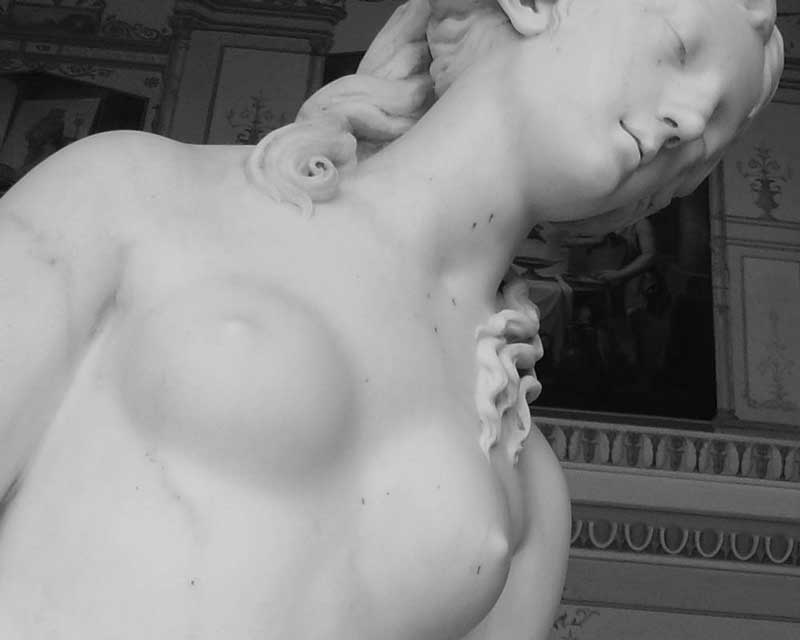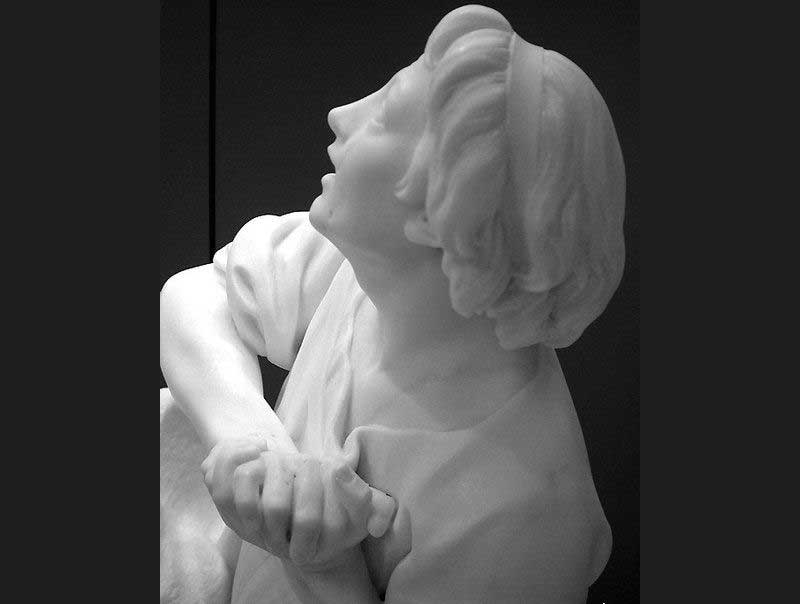
The enchanting mythological story of the Pygmalion and Galatea, the story about a Cypriot sculptor who fell in love with his own sculpture, was turned into an erotic novelette when the Roman poet Ovid adapted it in his Metamorphosis. According to the story, Pygmalion decided to stay away from the girls and devote his life to his craft, as he became disgusted by the debauched lifestyle of the local women. Gradually, he became obsessed with his idea and image of the perfect woman that he wanted to create. He became so much passionately engrossed in his work that he never took away his eyes from his incomplete sculpture of the perfect woman and was not even aware about the women peering through his doorway.

Finally the day came, when Pygmalion completed his creation of the woman of his dream and hopelessly fell in love with the statue of the young girl, which he himself created. He named her Galatea, meaning ‘she who is milky white’ and like a person in hypnotic spell, spent countless days and nights only staring at her unearthly beauty. Days passed on, but her attitude did not change. Like a man possessed, he lost himself in his devotion, tormented by the unrequited love for the lifeless beauty that he created, ignoring the lively girls, who were interested about him.

In the meantime, while the city was celebrating the festival of Aphrodite, the goddess of love and beauty, Pygmalion prayed intently to the goddess to give life to the statue of his beloved Galatea. Touched by his intense desire, the goddess blessed him, fulfilled his invocation and breathed life into the statue. At that moment Pygmalion noticed a flush on the cheeks of the sculpture and he realized that his prayer was heard. Without wasting a moment the excited sculptor embraced the statue and life breathed into the cold marble. Ultimately, Pygmalion and his creation lived happily ever after.

French sculptor Étienne Maurice Falconet (1716-1791), one of the most celebrated sculptors of his age, who bridged the gap between late baroque and neoclassical sculpture, was best-known for his Bronze Horseman, the equestrian bronze statue of Peter the Great in St. Petersburg. His Pygmalion and Galatea, now displayed at the Louvre Museum in Paris, was probably exhibited by the artist at the Salon of 1763. The beautiful sculpture depicts Pygmalion in rapturous amazement at the feet of his love object, the sculpture of a nude woman, just at the moment when it became a living woman, by the grace of Aphrodite, the goddess of love. He is dressed in a long robe and with a bandana around his hair and thronged sandals on his feet, kneeling on the pedestal with his hands clasped in ecstasy at the sight of the awakening Galatea who stands naked before him.
